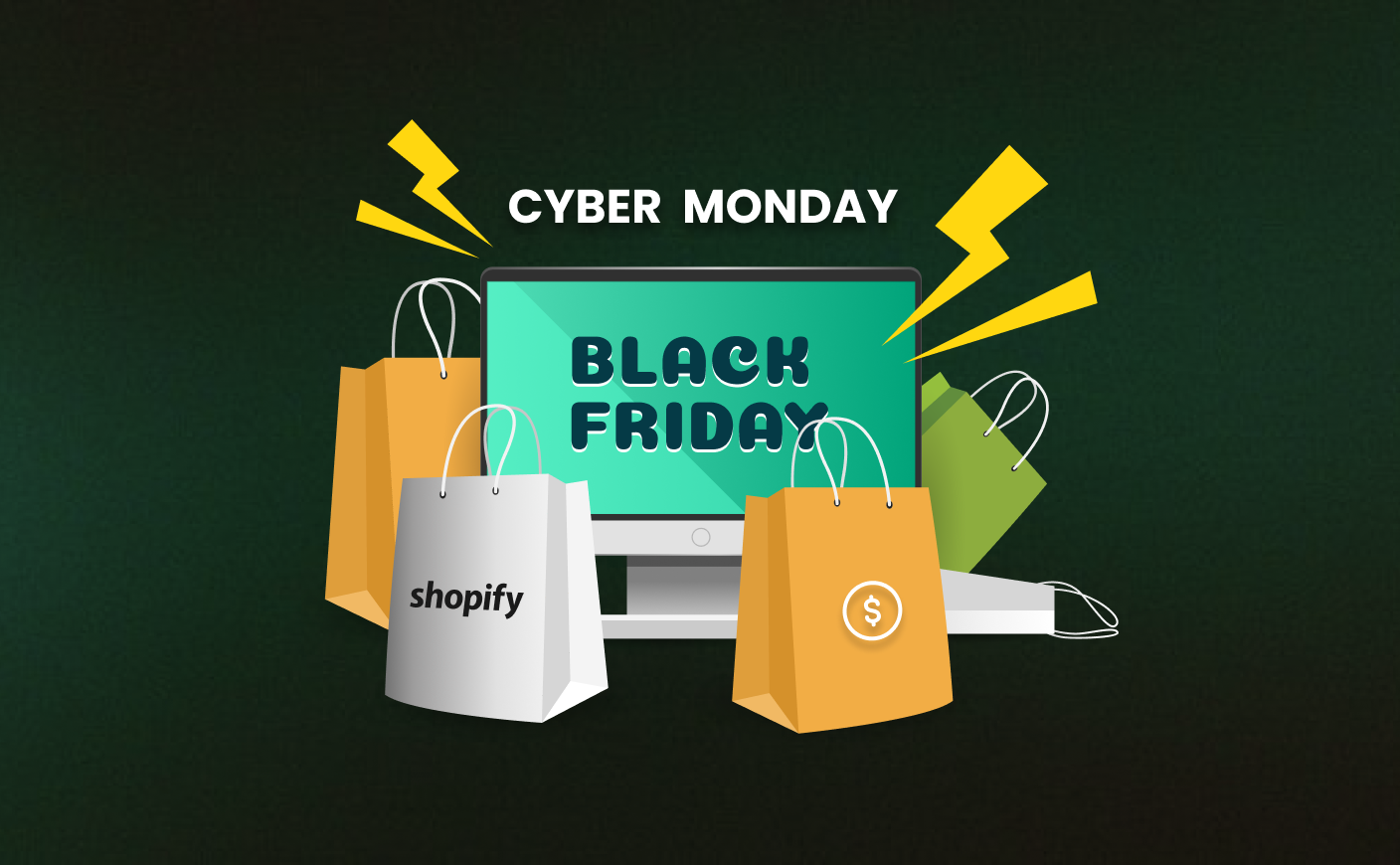Shopify Dropshipping : How to Build a Profitable Business
shopify
shopify dropshipping

Dropshipping has turned out to be one of the most popular ecommerce business models in recent years. And with the growing popularity of Shopify, it has become very easy for entrepreneurs to get started.
Unlike traditional retail businesses, dropshipping allows you to sell products without the need for maintaining a huge inventory. You just simply collaborate with partners who look after your inventory and shipping, while you put all your focus on sales, marketing, and customer service.
If you are thinking of starting a dropshipping business on Shopify platform, you have come to the right place. In this guide, we will take you through the process of building a successful dropshipping business, from selecting the right products to scaling your business for long-term growth.
5 Steps To Setting Up Your Shopify Dropshipping Business
Let us go through the five easy steps in which you learn how to dropship on shopify.
#1 Research and Choose a Profitable Niche
This is the most important step of your business - choosing a niche that will generate maximum revenue. Your niche will define your target audience, the products you'll sell, and the overall direction of your store.
Here’s how to find a profitable niche:
1.1 Understand Market Trends
Start by researching the current market trends. Some niches are more competitive than others, so choose one with strong demand but low competition. You can use tools like Google Trends or explore Shopify’s trending products page to identify what's popular.
Some profitable dropshipping niches to consider are:
Clothing & Accessories: Fashion is always in demand, yet it's a competitive market. Focus on certain trends or eco-friendly fashion to carve out a distinct niche.
Beauty & Personal Care: With the increased interest in self-care and skincare goods, this niche presents numerous opportunities.
Tech Gadgets: If you enjoy gadgets, this is a thriving market. Look for the latest trends, such as wearable technology and creative phone accessories.
Home Office Products: As remote work becomes more prevalent, home office equipment such as ergonomic chairs, desks, and office supplies are in high demand.
1.2 Analyze Customer Pain Points
Consider the challenges you can solve for your consumers to help you narrow down your niche. Evaluate your potential customers' demands and problem issues. This will help you not only in selecting the appropriate products, but also in developing efficient marketing strategies that resonate with your target demographic.
1.2 Evaluate Your Profits
Once a niche has been determined, check whether potential products are profitable. Consider the product cost, supplier prices, delivery expenses, and marketing costs. Use Shopify's built-in tools to calculate margins and ensure that your products are priced in a way that there is still room for profit after all expenses are taken into consideration.
#2 Set Up Your Shopify Dropshipping Store
After deciding on a market niche and items to sell, it's time to set up your Shopify store. Starting is simple with Shopify, even if you lack technical expertise. Here’s a step-by-step guide:
2.1 Create a Shopify account
Start by signing up for a Shopify account. Choose a pricing plan that fits your needs, and you’ll get access to all the tools you need to build your store.
2.2 Select a Theme
Shopify has a range of themes that you can use to enhance the visual attractiveness of your store. Select a theme that complements the brand image of your company and ensure that it is responsive, meaning it will display well on desktop and mobile devices.
Also read: Most popular Shopify theme in 2024.
2.3 Configure Your Store Preferences
Set up essential store details, including your store’s name, domain, and payment gateways. Shopify offers a variety of payment methods, including PayPal, credit cards, and other widely used payment systems. Additionally, you will also need to set up your shipping information and tax preferences.
2.4 Add Products to Your Shop
It's time to add your products in the store now. You have two options: manually add them or import products straight from suppliers using a dropshipping program like Oberlo or DSers. Make sure you provide competitive prices, excellent photos, and informative details for every product.
2.5 Create Core Pages
To improve the client experience, including core pages like:
- About Us: Tell stories and values of your brand.
- Reach Out to Us: Make it simple for clients to contact you.
- FAQ: Answer common customer questions.
- Return Policy: Clearly state the guidelines for handling refunds and returns.
2.6 Test Your Store
Before you launch, make sure you test everything so as to ensure everything functions properly. Check that all buttons, links, and payment methods are operating properly. Make sure your checkout procedure is quick and easy to use by testing it.
#3 Promote Your Dropshipping Business
To build a successful Shopify dropshipping business, you need to have a strong marketing strategy. This will help you drive traffic and make more conversions.
Here are some important strategies to consider:
3.1 Content Marketing
Create valuable content to establish a relationship with your audience. Create educational videos, blog posts, and how-to manuals that are relevant to your field. Using content marketing not only improves SEO but also positions your company as an authority in your field.
Also read: How to leverage Shopify SEO for trending keywords in your niche.
3.2 Marketing on Social Media
Use social media platforms like Facebook, Instagram, and TikTok to connect with prospective customers. Post promotions, behind-the-scenes videos, and excellent product photos to keep your audience interested. Additionally, social media paid advertisements could also bring in targeted customers to your store.
3.3 Influencer Marketing
Work together with well-followed influencers in your niche. Influencers can generate genuine content about your products or services thus expanding the target market and fostering brand trust.
3.4 Email Promotion
Email marketing is one of the best strategies to maintain a relationship with your clients. Send newsletters, product updates, promotions, and personalized offers to encourage repeat business.
3.5 Paid Advertising
If your budget allows, consider using paid advertising such as Google Ads or Facebook Ads. By providing elaborate targeting choices, these platforms enable you to connect with the individuals who are most likely to be interested in what you're selling.
#4 Manage Orders And Customer Service
It is important to ensure a smooth fulfillment process as your customers place orders to your ecommerce store. Here’s how to manage it:
4.1 Completing Orders
You will receive an email or a notification in your Shopify dashboard whenever a customer places an order. The order details can then be sent to the supplier. Your supplier will pack and dispatch the product straight to the consumer, depending on their procedure.
4.2 Give Tracking Details
Provide your customer with tracking information as soon as the supplier ships the item. Since consumers can track the status of their order, this increases customer satisfaction and fosters trust.
4.3 Customer Service
Offer top-notch customer service via phone, live chat, email, and other channels. Answer questions right away and take care of any problems right away.
4.4 Control Refunds and Returns
Offer clients with easy access to a clear return and refund policy. Make sure the return process is simple and effortless for customers.
#5 Optimize and Scale Your Dropshipping Business
Once your dropshipping with Shopify business starts running, it is time to scale and improve. Here are some strategies to help you grow your store:
5.1 Increase the Range of Your Products
Think about expanding your store's inventory. Research new trends within your niche or related niches to offer a wider selection to your customers.
5.2 Improve the Performance of Your Website
Make sure your Shopify store loads quickly and mobile-optimized. Improving your website's speed is essential since a slow-loading website may drive away potential buyers.
5.3 Automate Your Processes
You can save time and grow your business by automating processes like email marketing, order fulfilment, and customer service. Automation can be made simple using Shopify apps like Gorgias for customer support and Oberlo for product sourcing.
5.4 Track Important Metrics
Monitor important performance indicators like traffic, conversion rates, and client retention with Shopify's analytics tools. These insights will help you make informed decisions about product selection, marketing strategies, and more.
You can also read our comprehensive guide on how to get more traffic to your Shopify store.
Conclusion
If done correctly, launching a Shopify dropshipping business can be a very profitable venture. You can establish a successful business by picking the appropriate niche, designing an intuitive store, and putting good marketing techniques into practice.
Keep in mind that effective research, commitment, and ongoing store and process optimization are the keys to success in dropshipping.
CrawlApps
At CrawlApps, we don’t just build Shopify stores—we create experiences that sell. We’re a bunch of problem-solvers who love turning ideas into stores that actually converts. Whether it’s fixing what’s broken or building something from scratch, we make sure every detail works in your favor. No fluff, no jargon—just real solutions that help your business grow. If you’re serious about Shopify, you’ll feel right at home with us.















